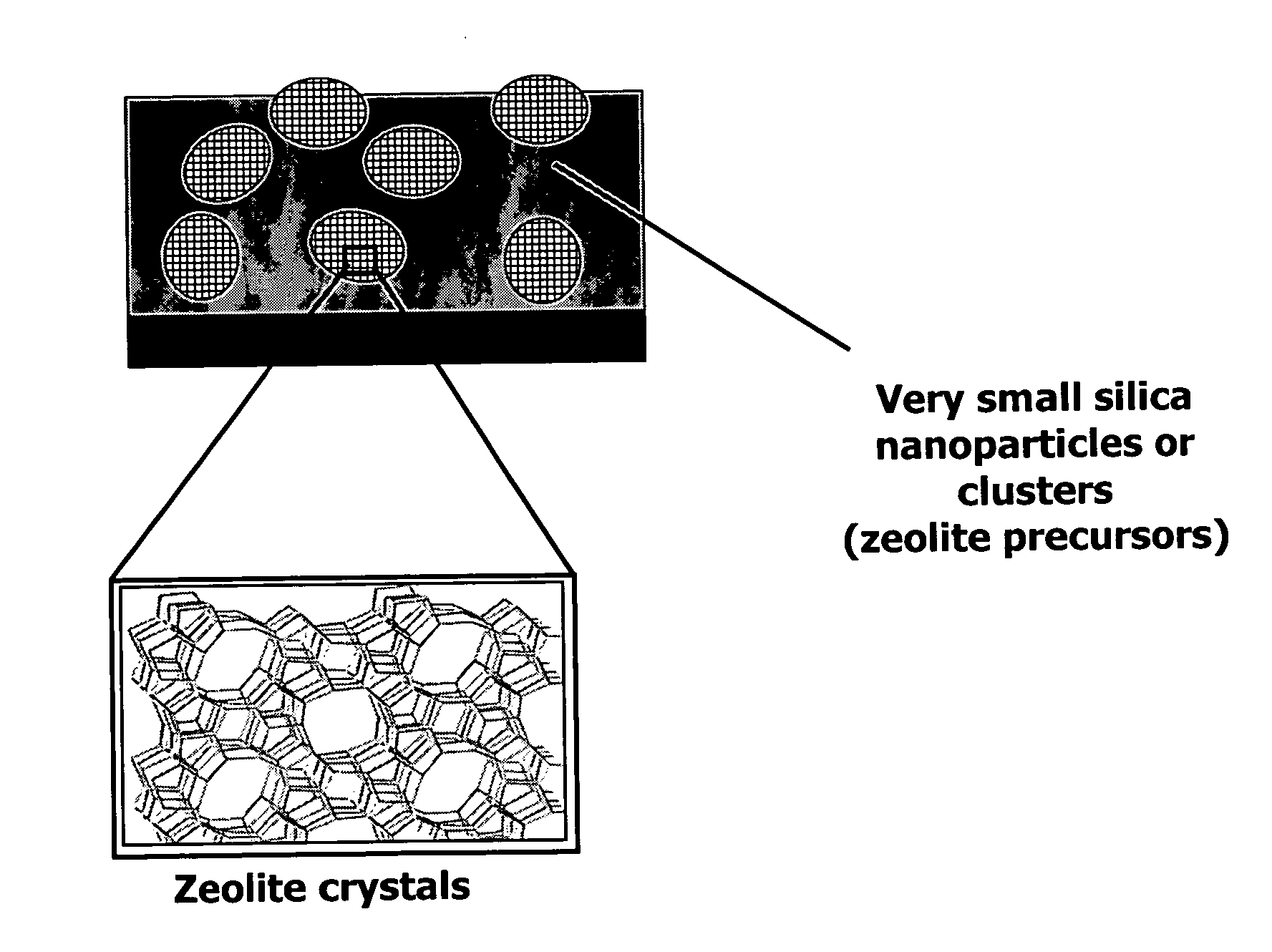UV light exposure for functionalization and hydrophobization of pure-silica zeolites
- Summary
- Abstract
- Description
- Claims
- Application Information
AI Technical Summary
Benefits of technology
Problems solved by technology
Method used
Image
Examples
example 1
Depositing a Silica-Zeolite Film
[0091] Zeolite films can be deposited in several ways: in-situ crystallization, spin-on of a zeolite particle suspension, dip-coating of a zeolite particle suspension, etc.
[0092] As described in this example and used as sample in further examples, spin coating can be used as deposition method and is performed as described below.
[0093] For the examples, spin-on pure-silica-zeolite MFI films are following the recipe proposed by Yan et al. (U.S. Pat. No. 6,630,696).
[0094] In that recipe, a clear solution is obtained with a molar composition of 1 Tetrapropyl-ammoniumhydroxide (TPAOH) / 2.8 SiO2 / 22.4 Ethanol / 40 H2O. This clear solution is aged under stirring at ambient temperature and then heated up to 80° C. during 3-5 days capped in a plastic vessel. Then, the nanoparticle suspension obtained is centrifuged at 5000 rpm for 20 minutes to remove big particles. The suspension is spun on Si wafers (substrates) at 3300 rpm during 20-30 seconds. The film obt...
example 2
UV Treatment of a Zeolite Film
[0095] For the examples, a single wafer UV exposure system (RapidCure™ from Axcelis) tool was used. Exposure with a microwave-driven electrodeless bulb emitting UV light with a broadband spectrum was used. Inert gas ambient and ambient pressure was used. The wafer (substrate) with the pure-silica-zeolite film on top of it sits on a thermo chuck at temperature of 425° C. The exposure time is 5 minutes and the spectrum of the UV emission is lower than 300 nm.
example 3
Yield Measurements (Crystallinity)
[0096] The synthesized silica-zeolite film had around 30% of zeolite nanocrystals (yield). The yield of said silica-zeolite film after deposition is the percentage of silica belonging to zeolite nanocrystals in the order of 50-70 nm. Thus, the final films in the example have around 30% of silica nanocrystals and the rest is amorphous silica. This amorphous phase contains zeolite seeds responsible of the creation of the silica nanocrystals, possibly nanoslabs and / or nanotablets as proposed by Kirschhock and co-authors.
PUM
| Property | Measurement | Unit |
|---|---|---|
| Temperature | aaaaa | aaaaa |
| Temperature | aaaaa | aaaaa |
| Temperature | aaaaa | aaaaa |
Abstract
Description
Claims
Application Information
 Login to View More
Login to View More - R&D
- Intellectual Property
- Life Sciences
- Materials
- Tech Scout
- Unparalleled Data Quality
- Higher Quality Content
- 60% Fewer Hallucinations
Browse by: Latest US Patents, China's latest patents, Technical Efficacy Thesaurus, Application Domain, Technology Topic, Popular Technical Reports.
© 2025 PatSnap. All rights reserved.Legal|Privacy policy|Modern Slavery Act Transparency Statement|Sitemap|About US| Contact US: help@patsnap.com



